Versuchen GOLD - Frei
Low-Stress Cattle Handling: The Basics
Stockfarm
|October 2020
Reducing stress during handling not only improves productivity, but also prevents physiological changes that lower productivity. Handling stress lowers conception rates and reduces immune and rumen function in animals. It is therefore vital for handlers to have a good grasp of livestock behaviour in order to reduce stress and injury, which in turn will lead to increased profit.

Another key aspect that is markedly increasing is the public image of cattle farming. Consumers must have peace of mind that the meat they eat has been produced in a low-stress environment.
The good news is that creating a low-stress environment will cost you virtually nothing. The only cost is the time it takes to learn the ins and outs of cattle behaviour and to then practise the necessary skills.
This is the first of a series of articles in which low-stress cattle handling (LSCH) will be explored. This article looks at three aspects pertaining to LSCH, as explained in an article by two experts, Michigan State University (MSU) extension educator Ben Bartlett, and Janice Swanson, animal science professor at MSU.
According to these experts, “the secret to LSCH is understanding why cattle act the way they do and then using that knowledge to ‘ask’ and not force them to do what you want.” The facilities used on farms must also aid rather than impede the work producers do. However, no matter how well these facilities are designed, it will not compensate for poor handling skills and a lack of cattle behaviour knowledge.
The following is an excerpt from the article.
Why do cattle act like cattle?
Three ingredients control an animal’s actions: anatomy, instinct and experience.
Let’s look at anatomy first. Cattle see the world differently than we do. Because they are prey animals, their eyes are shaped differently and are located on the sides of their heads. A cow can see up to 300 degrees around itself, whereas a human has roughly a 140-degree field of vision. Cow eyes are more rectangular – our eyes are round – and have silted rather than round pupils.
Diese Geschichte stammt aus der October 2020-Ausgabe von Stockfarm.
Abonnieren Sie Magzter GOLD, um auf Tausende kuratierter Premium-Geschichten und über 9.000 Zeitschriften und Zeitungen zuzugreifen.
Sie sind bereits Abonnent? Anmelden
WEITERE GESCHICHTEN VON Stockfarm
Stockfarm
Trust and muffins lead the way
In any business, communicating in silos is the main cause of issues among managers. With only three of us managing things, myself on sheep, Gert on vehicles and Mbali on payments, breaking through our silos is easy. Twice a week we hold short morning meetings to report progress and problems towards our goal of turning grass into sheep for profit.
2 mins
December 2025
Stockfarm
Santa's new team
Last December, we warned Santa Claus of the perils of visiting South Africa with his team of reindeer. We cautioned him about the biological hazards his reindeer might bring into the country, and the import tariff issues he might encounter when trying to bring in all those gifts. We also elaborated on the heat and other environmental challenges his team might face. But we also told him about our friendly farmers and the braais he might be invited to, complete with a beverage of his choice.
3 mins
December 2025
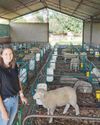
Stockfarm
The effect of iucerne hay quaiiiy on feedlot lambs
Lucerne hay is one of the most widely used roughage sources for ruminant diets, largely due to its reputation for providing high-quality nutrition. Important considerations for producers who use lucerne hay in their feed programme include assessing the true value of lucerne hay, determining the most suitable grade for specific feeding purposes, considering its cost, and balancing these factors against optimal feedlot performance.
3 mins
December 2025
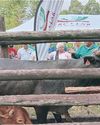
Stockfarm
Imfuyo-yami Ingumcebo Wami: Livestock as a legacy of wealth and wisdom
In the heart of KwaZulu-Natal, under the warm sun and the watchful gaze of the rolling hills, the Hlawini Community Hall in Umfolozi Local Municipality came alive with the spirit of unity, learning, and tradition. The occasion? The Umfolozi Livestock Farmers' Information Day, held under the banner of the Agricultural Research Council's (ARC) Kaonafatso ya Dikgomo (KyD) project, a national an initiative aimed at empowering communal livestock farmers through knowledge, technology, and sustainable practices.
3 mins
December 2025
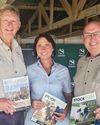
Stockfarm
Celebrating the 2025 Komga Agricultural Show
This year's Komga Agricultural Show, energised by the arrival of summer and filled with festive stalls, was a hive of activity. The grounds came alive with live music, a poultry exhibition, the familiar sounds of cattle and sheep in the pens, displays of horsemanship, and top-quality technology and implements on show.
2 mins
December 2025
Stockfarm
DSA reaches new milestone on the road to excellence
The Dairy Standard Agency (DSA) has enjoyed an exceptional 2025 so far, marking two major achievements that underscore its ongoing pursuit of excellence.
3 mins
December 2025
Stockfarm
Samic: Protector of red meat quality
If you thought the South African Meat Industry Company (Samic) is just about carcass competitions, think again. Fact is, the company plays a pivotal role in South Africa's meat supply chain, upholding rigorous standards of quality, safety, and transparency from the farm gate to the plate.
3 mins
December 2025
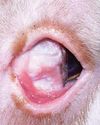
Stockfarm
Wireworm management in small stock
Years of indiscriminate dosing have eliminated weaker wireworms, allowing resistant populations to dominate and spread through flocks. Wireworms typically hatch following good rains and warm nights. When larvae move up the green grass, they are ingested by grazing sheep. About 20 days later, the worms begin sucking blood, leading to anaemia and, in severe cases, death.
2 mins
December 2025

Stockfarm
Back to basics at the 2025 LRF Stockman School
The 17th Annual LRF Stockman School, hosted by the Livestock Registering Federation (LRF), kicked off with great enthusiasm at the Aldam Holiday Resort and Conference Centre in the Free State. Held over three days, the event brought together leading experts from a range of fields who met everyone's expectations by addressing relevant and timely topics head-on.
7 mins
December 2025
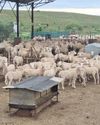
Stockfarm
Vertical gains in the lambing pen: It's not just about the numbers
In a world where rising input costs and increasing consumer demands play a decisive role, it has become more important than ever for red meat producers to raise lambs that not only benefit the producer but also add value throughout the entire supply chain.
4 mins
December 2025
Translate
Change font size

